A roundup of the year
Monday 3 December 2007

So what were the big technology trends and developments in 2007? As the year draws to an end, we asked a diverse selection of software specialists to tell us what made an impact on them during the past year...
Did the best screen recorder just get better...?
Friday 23 November 2007
User Interaction - Making a Hash of it!
Thursday 1 November 2007
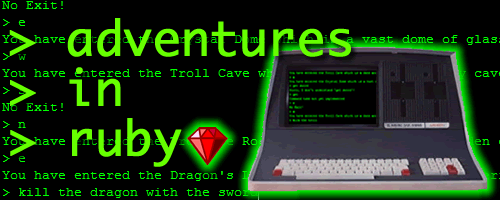
In the first two parts of this series, I concentrated on constructing an appropriate class hierarchy for an adventure game. So far, there has been no user interaction at all. When I wanted to test the game, by moving around the map or taking a and dropping objects, I did so by simulating user interaction (as in Adventure/adv2.rb in the source code archive). The time has now come to move beyond this and add some means by which a real live player can interact with the game.
Ruby draws closer to .NET
Wednesday 31 October 2007
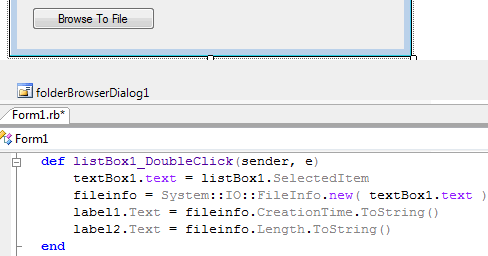
If Ruby and .NET are of interest...
Thought for the day
Tuesday 30 October 2007
I’m guest blogger on the ServerSide interoperability blog today...
Well, maybe.
Wednesday 24 October 2007
Wolfram Research and Stephen Wolfram today announced that 20-year-old Alex Smith of Birmingham, UK has won the US $25,000 Wolfram 2,3 Turing Machine Research Prize.
When Worlds Collide...
Monday 22 October 2007
Exhaustion is a word that is barely adequate to describe the way I feel. If you are a software developer by profession, you may know this feeling. We’ve been labouring over a huge update to our software for longer than I care to remember. There have been months of 12 hour days and 7 day weeks with nothing in the way of relaxation. Finally the software is out and, instead of feeling elation, I just want to crawl into a quiet corner and doze off.
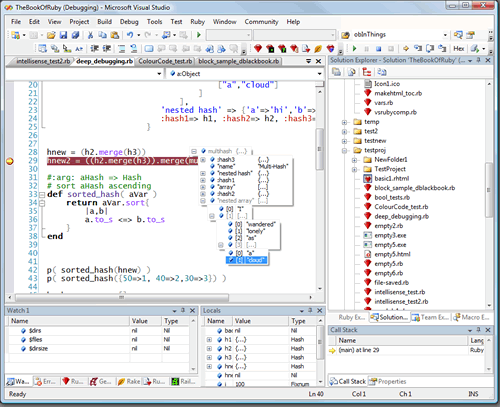
When developing a great IDE, you need a great IDE - a text editor simply doesn’t cut the mustard...
Built with PDT
Friday 12 October 2007
Zend, the PHP company, have announced ‘Zend Studio for Eclipse’, an Integrated Development Environment (IDE) for PHP, built on top of the recently announced Eclipse PDT project (see the Bitwise interview about the PDT). It is designed for professional PHP developers who need to support the entire PHP application lifecycle and want to take advantage of the sophistication and extensibility of the Eclipse framework and ecosystem.
Further explorations in Ruby programming...
Sunday 7 October 2007
Time to get on with the next phase of my adventure game written in Ruby. This series comes with a warning: I’m going to be writing code the way I do in real life - which is not necessarily the way that programming writers generally like to give the impression that they write code. From time to time, I may try things out, then change my mind and go back and rewrite my code. In fact, this series is a bit like an adventure game itself: full of puzzle-solving and exploration through the world of Ruby. If you are looking for a tutorial that moves in smooth and painless progressions with no dead-ends or U-turns, this series is not for you. If, on the other hand, you want to learn some Ruby and have some fun along the way, jump on board...
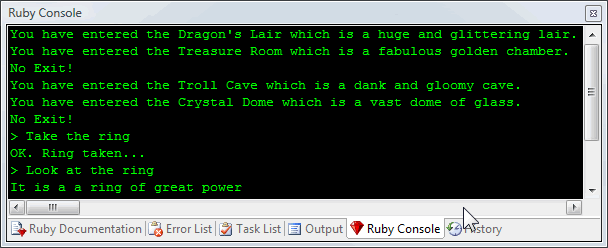
This month we’ll work out ways of taking and dropping the treasures located in the various ‘rooms’ of the game.
The Lowdown on the PHP Development Tools Project...
Sunday 30 September 2007
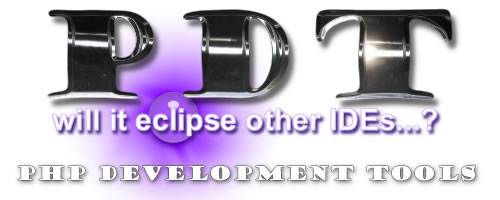
On September 18th, this year, the Eclipse Foundation announced the availability of the 1.0 release of the Eclipse PHP Development Tools (PDT) project. To find out more about this project, Bitwise spoke to Ian Skerrett, the Director of Marketing at Eclipse, and Yossi Leon, the Zend Project Leader for PDT.
The Document Map, A Table Of Contents and Scrambled Eggs...
Saturday 29 September 2007
Microsoft Word is a wonderful word processor but, by heck, it’s far, far too complicated. The latest version (2007), misguidedly tries to hide the complexity by putting lots of nice friendly-looking buttons across the top of the screen, thereby making it almost impossible for those of us who’ve used previous versions to find the functions that were previously on menus and (worst of all), stuffing a huge amount of features into a ‘Word options’ menu/dialog box thingummy which is the software equivalent of a haystack for needles.

Those blasted button bars must seem easy to use to someone, I suppose - but certainly not to me!
My Adventures With Lords, Ladies and The Occasional Queen...
Tuesday 25 September 2007
I have, I confess, been somewhat negligent in my blogging activities of late. This can be attributed to two major distractions:
1) Developing code completion and .NET connectors for Ruby (and Ruby On Rails) and..
2) Becoming strangely entangled with Queen Victoria, Charles Dickens and a gentleman adventurer by the name of Lord Likely.

Lord Likely (with his faithful servant, Botter), is the sort of chap who made the British Empire what it is today. Read his adventures and tremble...
Introducing the Ruby Connector
Wednesday 12 September 2007
In my life away from Bitwise I am one of the developers of the Ruby In Steel Ruby (On Rails) IDE for Visual Studio. The Ruby language has many attractions but visual form design isn’t one of them.
Just give me the eggs, bacon and sausages...
Tuesday 11 September 2007
The novelty has definitely worn off where Spam is concerned. No longer do I chuckle when I get emails inviting me to enlarge my penis or invest in stocks that are about to go through the roof. But how do I stop the stuff?
or: How Lulu Made Me a POD Person...
Sunday 2 September 2007

There was a time when, in order to be a published author, you either had to: a) have been to the right school and joined all the right societies or b) be a personal friend of a publisher (where steps (a) and (b) are not mutually exclusive). In a few rare cases you might even have made it in talent alone.
And you may already have it!
Sunday 26 August 2007
I happen to need to do some OCR (Optical Character Recognition) at the moment. Having discovered that the ‘80s are back in fashion (yes, I promise you!) I decided the time was right to republish some of the stuff I wrote back in the early ‘80s. Back then I was a pop music journalist and spent my time interviewing stars such as Boy George, George Michael, the B52s, Judas Priest and Adam Ant. Just to show how long ago this was, I didn’t even have a computer. Everything I wrote was banged out at the keyboard of an ancient and formidably heavy Imperial 66 typewriter.
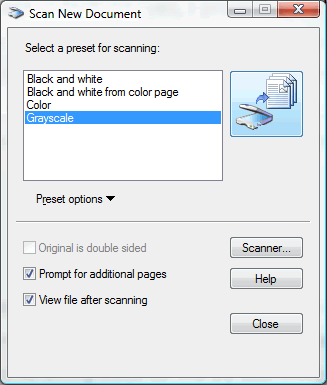
You may not know it, but you may already have this OCR program!
How To Make Dreamweaver Work Better With a CMS
Tuesday 21 August 2007
One of the little known features of Adobe’s Dreamweaver is its ability to display non-standard tags as though they were native HTML. This is incredibly useful if you happen to be developing a web site using a CMS (Content Management System) which has its own special-purpose tags.
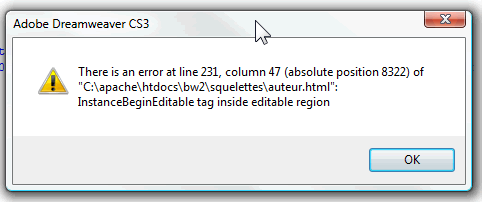
Don’t panic! This is not what it seems...
Sad news...
Saturday 11 August 2007
I’m sad to hear that the superb Dolphin Smalltalk is no longer being developed. I’ve used Dolphin Smalltalk on and off over quite a few years and have also written tutorials and features on it for Bitwise Magazine and on my software company’s blog. It’s a lovely product - even by Smalltalk standards - but it seems that commercial realities have meant that continued development is not an option...
The game’s afoot...
Friday 10 August 2007
The Ruby language may be fine and dandy for writing all kinds of serious applications. However, ask most Ruby programmers why they like programming in Ruby, and my guess is that most of them will tell you “because it’s fun.”
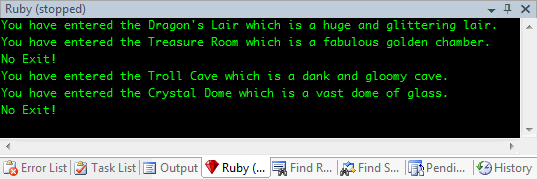
In this series we’ll go back to the ‘80s when games were in text and text was in green. In fact, we’ll also be exploring the features of one of the 21st Century’s up and coming languages – Ruby...
The Literary Art of Spamming
Tuesday 7 August 2007
Spam emailers seem to be steering a more literary course these days than hitherto. Once upon a time, the subject headers were pretty predictable – “Do you want a bigger penis?” or “Are your breasts too small?” being typical examples, occasionally spiced up with appeals to my avarice such as (to quite one of the classic spams of yesteryear), “Turn your washing machine into a cash cow.”
More..
|
|
|
|
|
320
|
|
|
|
|